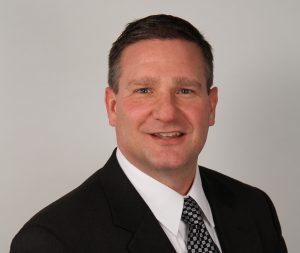NFL’s RF Control at Super Bowl LIV Was Years in the Making
Experience at the Big Game is the foundation for future wireless management
Story Highlights
Super Bowl LIV was significant for something you couldn’t see. It was the first major broadcast event in a city in which all TV stations had transitioned out of the 600 MHz frequency range in the wake of an FCC-mandated reallocation. It made the event’s RF allocation and management challenging, to say the least.
The NFL came prepared, however. The league has revamped its frequency-coordination effort, rebranding it as EFC (event frequency coordination) and developing an online portal to coordinate its operation nationally. The initiative, nearly two years in the making, will inform the league’s RF management for years to come.
The Portal: Data on Equipment, Venues, TV Channels, Cell Carriers
“Within the portal, we have pretty much every known piece of our RF equipment, with the bandwidth, the power levels, and so on,” says John Cave, VP, information technology, football solutions, NFL, who took over frequency coordination from the league’s football-operations department in late 2018. “As well, we have what we call static frequencies, for all the known frequencies in use at these venues, as well as where the TV channels are, where T-Mobile is, or any other cellular carriers. We also put in all the Wi-Fi frequencies and all that stuff, to help our frequency coordinators to not ever [inadvertently] approve something that’s in use.”

NFL’s John Cave: “Frequency coordination has become much more complicated and complex. What we’re doing now will make it much easier to manage.”
For Super Bowl LIV, he reports, his team had to deal with as many as 900 frequencies — almost 150 short of the number requested by 32 broadcasters and other wireless users at the events, including the league itself and the entertainment vendors, underscoring the vastness of the RF demands at major NFL events. These demands were divided between pre/postgame, in-game, and halftime. They were also spread out over the entire region, from the media center at the Miami Beach Convention Center to the Hard Rock Stadium, which are about 15 line-of-sight miles apart. Some of these ran into the GHz range, a broader reach in the wake of two major frequency reallocations in the past decade.
“In some cases, people would request certain frequencies that we couldn’t fulfill, couldn’t coordinate, or did on top of local TV frequencies with the disclaimer that their receivers would have to be within feet of the transmitter,” Cave explains. “If somebody said, ‘Hey, I need to use an IFB, and I’ve got talent that’s sitting behind a desk, and they want that IFB to be wireless,’ it might work within 5 or 10 ft. but not beyond that.”
Prioritized Access: The Game Comes First
That’s going to be the process for the EFC moving forward, as mobile-service providers move deeper into the MHz range. In fact, Cave notes that one team plans to use the 60 GHz stretch for sending audio from the field up to its radio broadcast booth next season.
To address increased demand for more-scattered spectrum, the EFC has prioritized the access it offers, with the NFL, naturally, coming first, covering such applications as coach-to-coach and coach-to-player communications and officials’ wireless microphones.
“We’re the NFL, we’ve got to put on a football game,” Cave says. “Without that football game, nothing else exists. Our second priority has always been the existing venue. The existing venue has a lot of RF that’s in place for game production, security, concessions, etc., so we’ve got to protect that as well. Then come the [teams] — the home team, the visiting team — and then we prioritize our broadcast partners.”
Other wireless users’ needs are interspersed with others — including the venues and local, state, and federal security agencies — whose priorities vary with games’ locations, schedules, and other factors.
NFL frequency coordinators are also being reorganized. The league relies on a number of regionally based coordinators who work its games in their areas, with some of them brought on to manage the RF for national events. A centralized database is being established for every frequency coordinated at every NFL event, allowing local critical frequencies to be determined quickly and reliably. This replaces a process in which this information resided on regional coordinators’ laptops and wasn’t centrally shared.
In addition, Cave sought a standardized process for frequency coordination across every NFL event. This creates accounts for various venues and teams regarding the makes and models of wireless microphone systems they use, along with those systems’ specifications, such as which frequency bands they operate in and their power ratings. The coordinator will assign frequencies for each game knowing what the systems’ specifications require.
“Once that frequency gets coordinated and we close out that request, you receive an automated email with all the information, so there’s not an opportunity for a mistake,” he says. “In previous years, I had to go to [the coordinator] and say, ‘Hey, what was used at last year’s Super Bowl or at last year’s [NFL] Draft?’ Now it’s all in one place.”
User prioritization will be part of each event’s protocol, with participants ordered in a specific hierarchy, making the entire process more predictable.
“Frequency coordination has become much more complicated and complex in the last few years,” Cave observes. “What we’re doing now will make it much easier to manage.”
